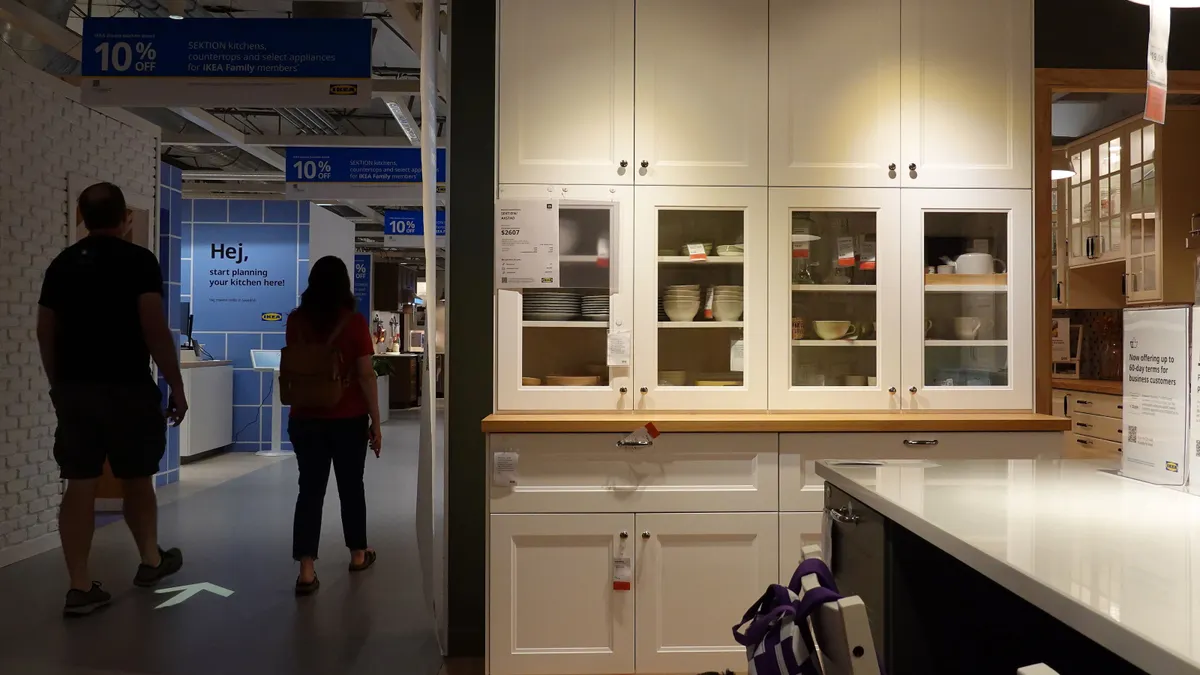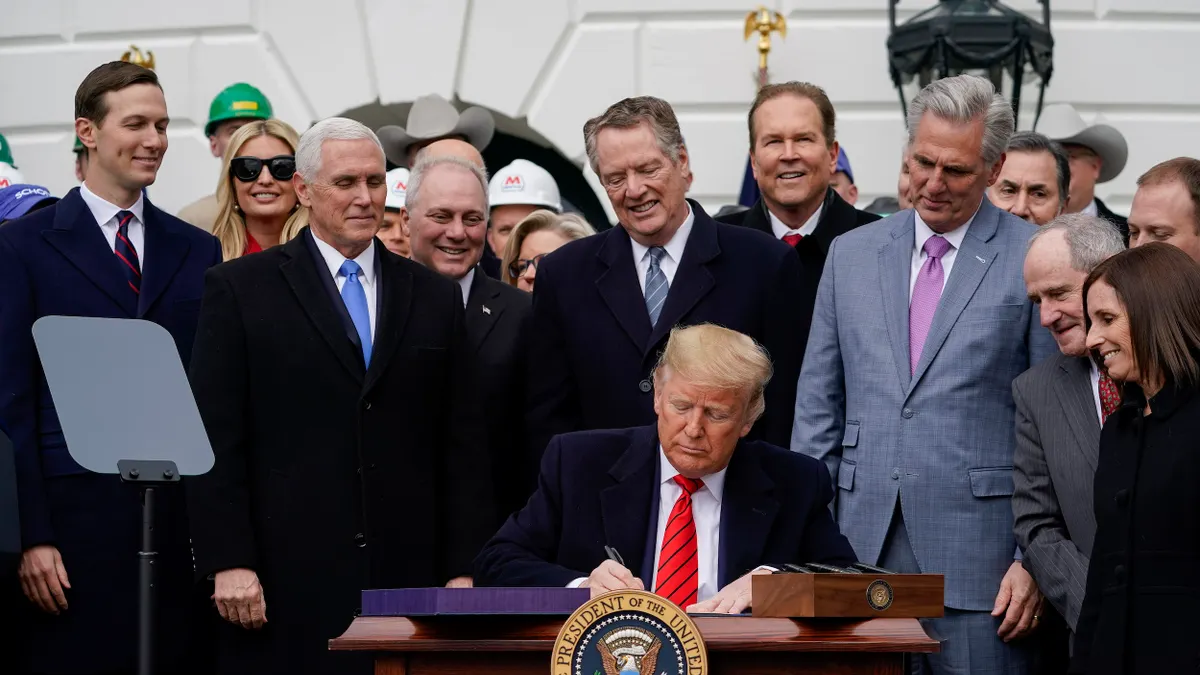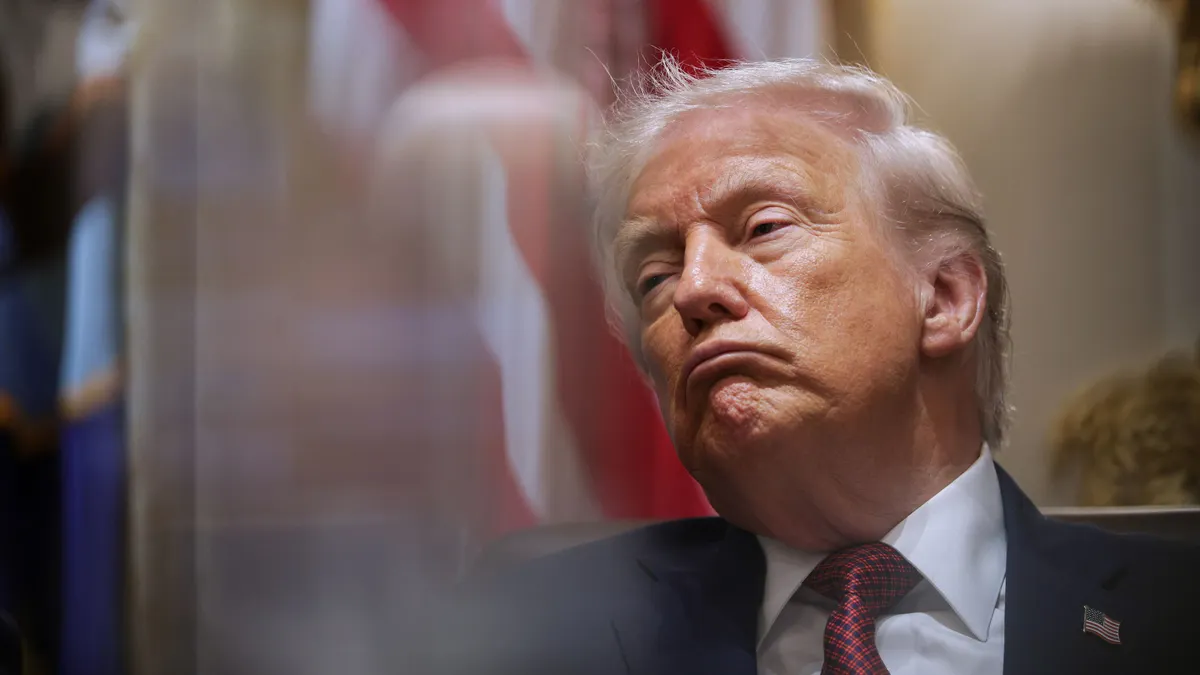Editor's Note: This article is part of a series on changes in trade policy under the Trump administration. All stories in this series can be found here.
When President Donald Trump promised tax reform, few would have guessed corporate actors would lead the charge against his party’s plan. After all, the President has pledged to lower the corporate tax rate by 15% in order to incentivize U.S. production.
The alarm is not over the President’s much-tweeted "big, border tax" on offshored products, however (this proposed tariff remains legally dubious and ill-defined). Rather, executives are worried about the impact a proposed change in the way taxes apply to imports and exports would have on globally integrated supply chains.
The reform plan, as proposed by Representative Kevin Brady of Texas, is a border adjustment tax (BAT), as it has come to be called. The plan proposes two key changes in companies’ calculations: exempt export-based earnings from U.S. taxes while wholly taxing imports.
Proponents argue such a plan would re-balance the U.S. trade deficit and make the country more competitive. But as details of the proposed BAT have come to light, other businesses are voicing fears the plan is a gamble that would cause undue harm to importers while subsidizing exporters in the short-term.
Both could be right, but given the long-term importance of the issue, Supply Chan Dive has put together a primer to explain the mechanics behind the tax, the controversy and the timeline to its potential implementation.
How does the border adjustment tax work?
To understand border adjustability, it helps to think of three basic hypothetical companies: the export-reliant, the import-reliant, and the mixed-supply company.
If each company records $50 in supply costs and $100 in revenues, each records a $50 annual profit. Based on the nation’s current tax system, the three companies would each pay a 35% tax on profits, or $17.50.
With a BAT however, the calculus shifts. Whereas previously our three companies each paid the same taxes, export tax exemptions and tax adjustments to imports would change each company’s after-tax balance. (Note: the following calculations solely take U.S. taxes and economic shifts into account.)
Say an export-reliant company gains all its revenues from foreign sales, and imports no supplies (its $50 costs are domestic). While this company still reports $50 in profits based on its cash flow, the business would receive a 100% tax exemption for its export-based revenue. As a result, the company would qualify to pay less in U.S. taxes, in this case bringing tax obligations to a net zero.
It helps to think of three basic companies: the export-reliant, the import-reliant, and the mixed-supply company.

Supply Chain Dive
Meanwhile, the import-reliant company sells all its products in the U.S., but imports all its supplies. Under the BAT, this company would still report $50 in profits, but pay an additional 35% tax on its costs, effectively doubling the tax burden to $35. (Previously, both the importer and exporter paid $17.50 in taxes.)
The math changes slightly when the proposed 20% corporate tax rate is applied, but the dynamic remains the same: import-reliant companies pay more, while export-reliant companies pay less under the BAT.
Of course, most companies are not fully import-or-export reliant, but a mix of the two. For these companies, the degree by which the BAT would affect the bottom line would ultimately depend on two economic issues: product elasticity and currency shifts.
In theory, businesses always have the option of passing on a cost increase to consumers. But their ability to do so depends on the elasticity of the product they sell. In the simplest terms, if a business has a monopoly on a high need product and the product has no substitutes (say, gasoline), the consumer often has no choice but to accept the price increase or not buy the product. Products such as shoes are highly elastic, and are therefore more susceptible to price increases that might result from the company passing on the additional cost.
Second, some economists argue that the effects of the BAT could be offset by currency appreciation. In the long term, the new tax would encourage exports and discourage imports through the changes in costs, which means the U.S. dollar would quickly appreciate.
“These supply chains cannot quickly change manufacturing bases either, to bring back to a domestic base.”

Guy Courtin
VP of Industry and Solutions Strategy, Infor
If the currency appreciates fully, proponents of the BAT suggest any negative effects on importers would be offset by a stronger dollar. If the dollar is valued 35% higher, imports would be 35% cheaper, and importers would register 35% lower pre-tax costs, balancing out the additional costs of the import-tax.
Based on these mechanics, proponents of the plan claim the BAT would ultimately help the U.S. drive down its trade deficit, without affecting business costs. Add a 15% corporate tax cut to the fold, and supporters would suggest the U.S. economy would benefit in the long-run.
But in the short-run, the BAT may hurt supply chains
Opponents argue the plan relies too heavily on long-term economic theory, while all but guaranteeing an immediate cost increase for importers while ensuring an uncertain shift in established value chains.
For that reason, over 120 retailers recently joined forces to lobby against the proposal, even creating an anti-BAT website to "Keep America Affordable."
"This tax could place a large burden on retailers that have supply chains that crisscross the globe," Guy Courtin, vice president of industry and solutions strategy at Infor told Supply Chain Dive. "These supply chains cannot quickly change manufacturing bases either, to bring back to a domestic base."
The retail industry would in theory suffer heavily from the tax, as its products are largely imported and highly substitutable. In other words, retailers could face a double whammy if economists’ predictions don’t work out: an additional tax and a limited ability to pass on costs to consumers.
"Retailers who are already under tremendous competitive pressure may see this as a challenge, possibly forcing some into untenable financial situations," Courtin added.
Planning for shifts in the costs of imports may not be a bad idea, especially as political risk becomes more prevalent.

Supply Chain Dive
Yet, disincentivizing imports is part of the BAT’s appeal for proponents, including many exporters as well as the White House.
"The obsolete and biased tax system subsidizing imports of foreign goods must be replaced with one that restores the United States’ competitive advantage in the foreign marketplace," according to the American Made Coalition, a lobby comprised by 25 pro-tax-reform businesses.
Exporters perceive the lack of border adjustability as a competitive disadvantage, since many of the country’s top trading partners have a similar tax on imports in the form of a value-added tax.
"This amounts to a self-imposed unilateral penalty on U.S. exports and a self-imposed unilateral subsidy for U.S. imports," the GOP stated within its tax reform blueprint.
In addition, White House National Trade Council Chief Peter Navarro has made no secret of his intention to force a reshoring of global supply chains to the U.S.
In a recent interview with the Financial Times, Navarro said, "It does the American economy no long-term good to only keep the big box factories where we are now assembling ‘American’ products that are composed primarily of foreign components.
"We need to manufacture those components in a robust domestic supply chain that will spur job and wage growth," Navarro added.
What’s next for the BAT?
The GOP has yet to bring legislation for a corporate tax reform to Congress, and reports claim it is unlikely to do so until the budget talks this spring at the earliest.
In addition, the already-controversial BAT is not wholly agreed upon, even among Republicans. The influential Koch Industries, for example, has come out against the BAT due to concerns over its effects on the economy. So while proponents argue the plan is indispensable, the provisions may still be scratched during congressional debate.
In other words, supply chains are not in immediate danger.
However, some companies are already considering plans to shift sourcing strategies to avoid the potential BAT. Corona beer distributor Constellation Brands, for example, said the company would seek to purchase their natural gas and packaging needs from the U.S. if such a plan was adopted.
Planning for shifts in the costs of imports may not be a bad idea, especially as political risk becomes more prevalent. And while daunting, measuring the impact of a potential BAT on your specific company may not be that difficult, thanks to an online tool — linked here — and in the recommended readings for your convenience.






















